Senegal
& Gambia
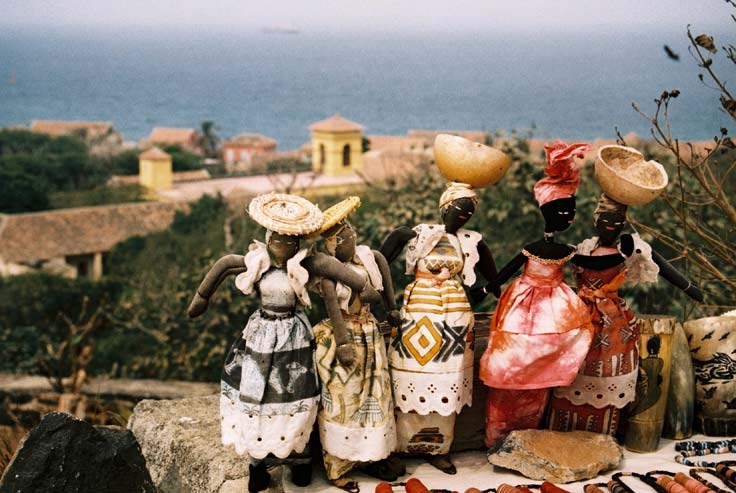
Dolls for sale on the Ile de Goree, a beautiful colonial island off the
coast of Dakar. Formerly a way station for slaves to be shipped
across the Atlantic, it now serves as a weekend retreat for locals and
a tourist attraction for foreigners. Its casual ambience marks a
welcome change from the hordes of scammers accosting non-blacks in
Dakar and Saint Louis.
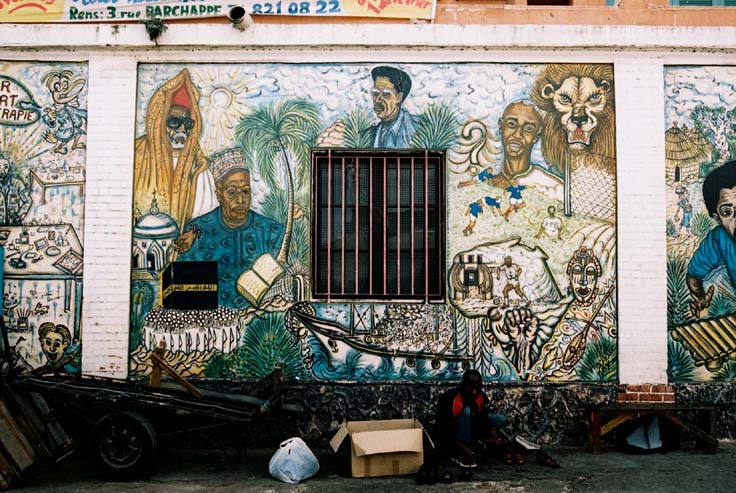
Street mural in downtown Dakar. Some Senegalese icons, including
the soccer player Diouf and the religious prophet Sheikh Amadou Bamba,
figure prominently here and all over the country.
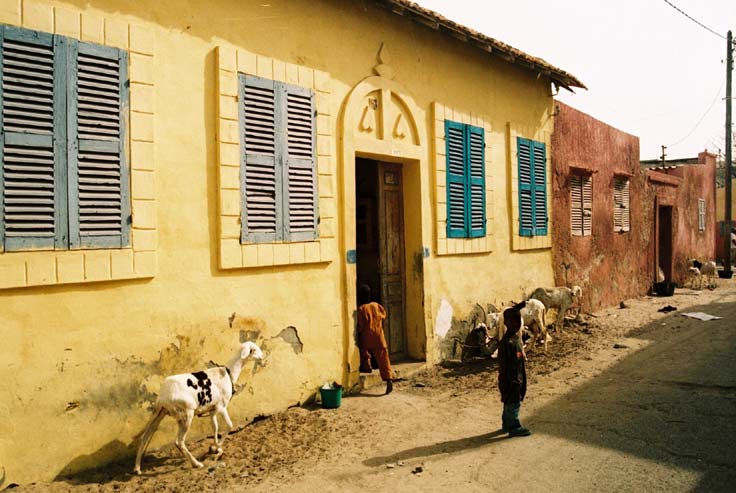
A street in the island city of Saint Louis, once the colonial capital
for all French West Africa. It is still a prominent city in
Senegal, but Dakar, and even one of Dakar's distant suburbs Thies, have
dwarfed modern day Saint Louis, which thrives as a tourist destination.
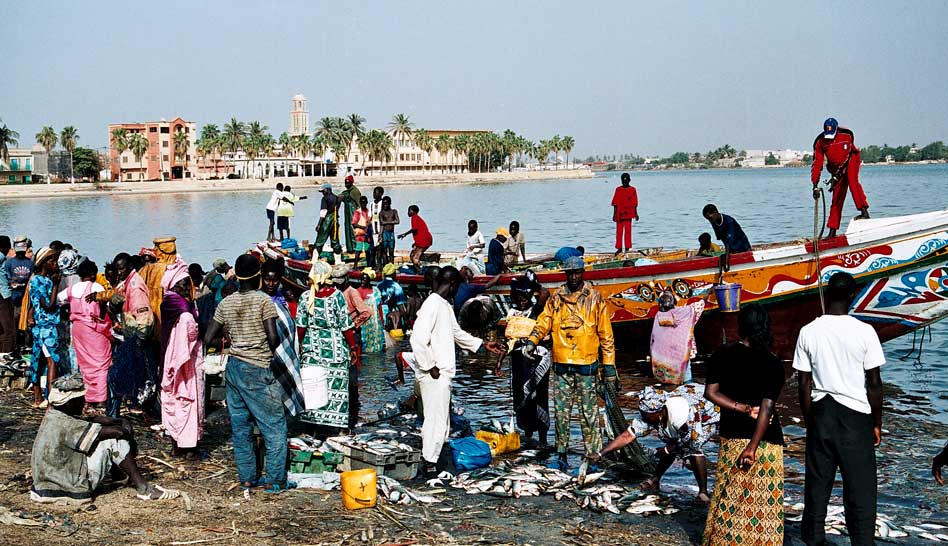
The fishing port of Saint Louis. Local merchants await the
afternoon haul from a fishing trawler. Fishing is not as vital a
part of Senegal's economy as is the case in Mauritania, but they do
prepare it deliciously. Senegalese cuisine is easily the class of
West Africa, and I often found myself seeking out Senegalese
restaurants in other regional countries with shoddy cuisine (notably in
Mali and Burkina Faso)
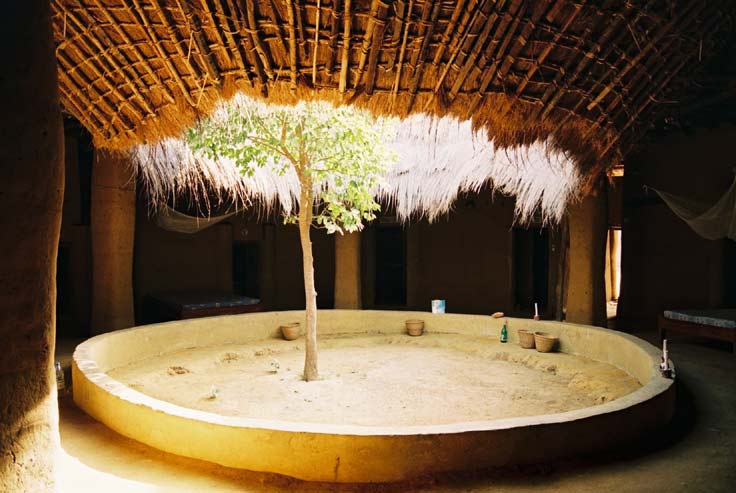
A case a impluvium style house in the Casamance village of
Enampor. Rainfall is funneled in from the roof down into the
circular central courtyard inside the house, around which the rooms are
aligned. Such traditional houses are no longer used but this, and
other traditional styles, have been reconstructed as housing for
tourists in community-based tourism projects. Casamance, the
strip of Senegal south of Gambia, has had separatist tensions with
Dakar, and sporadic violence and war over the years, which has
destroyed what was a prosperous tourist industry. A shame too,
because Casamance really is quite distinct from the rest of
Senegal: very laid back, none of the hassles you get in northern
Senegal, a friendlier countenance, tropical ecosystems and white sandy
beaches. Culturally it is more similar to Guinea-Bissau to its
south, and indeed they have shared phases of common history in the past.
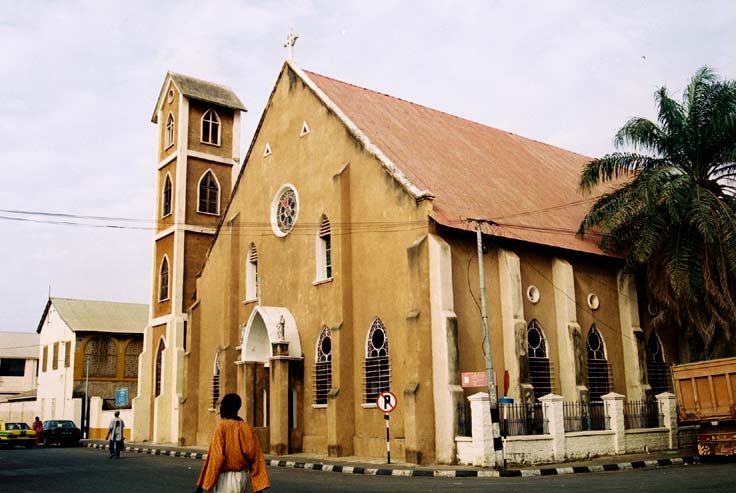
One of many churches in the Gambian capital of Banjul. In many
ways, the Gambia is a mirror image of northern Senegal culturally, but
spoken in English rather than in French. Same hassles, same
dependence on foreign tourism (including a lot of sex tourism), and the
same disdain of white people as a cash cow. There is no shame at
all in lying or fooling white people to extract their money.
Hearing what locals really think of foreigners in Senegal and Gambia
can be quite shocking, but it's not difficult to ascertain this by the
way they try to manipulate you. These countries have been
marketed as safe tourist destinations with decent infrastructure and
services, but the unfortunate reality is that there are some very
unpleasant people who you have to deal with there.
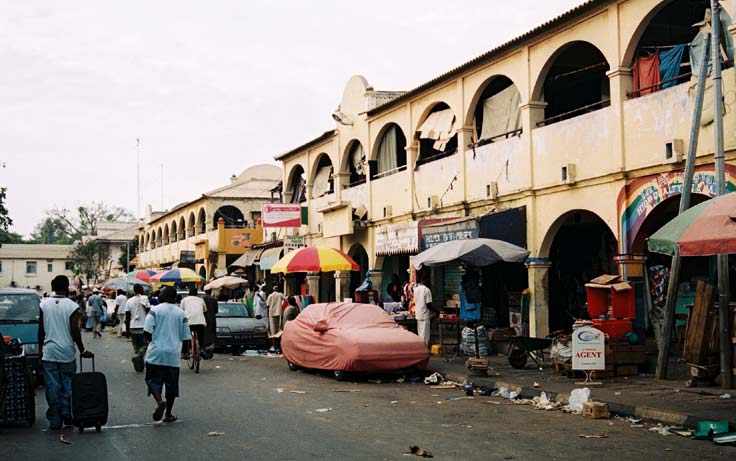
The rundown market of Banjul doesn't offer much to captivate
tourists. However, low prices of textiles draw many industrial
buyers from Dakar. One difference between Gambia and Senegal that
may stem from colonial differences is crime. British colonies
almost all have a certain sense of seediness and implied violence
that is absent in French colonies. Loutish behaviour and a
confrontational edge are much more apparent in former British colonies
and indeed crime rates are higher. The former French
African colonies, especially the muslim ones, are among the safest
countries in the world, comparing favourably even to southeast Asia.
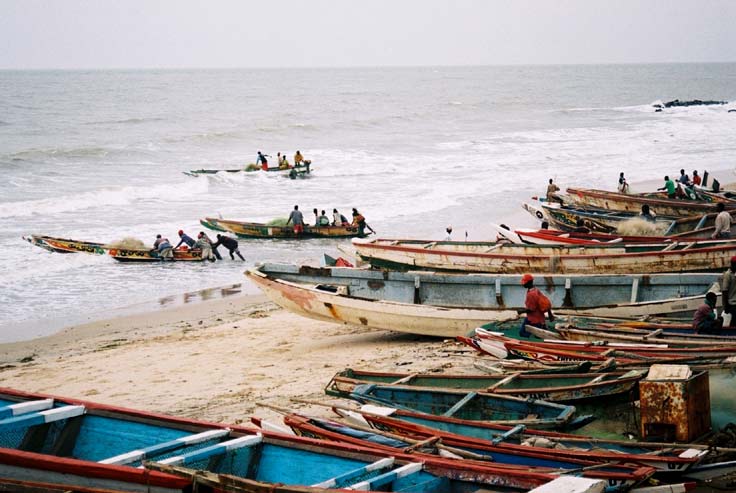
A fishing port in Bakau, a coastal suburb of Banjul. "Hey
mon" everybody will be shouting to you. Before trying to make
money off of you of course. Many lower income British vacationers
come to Gambia precisely because it is cheap and people can be easily
bought to do whatever you want, and this has unfortunately encouraged
the development of coastal Gambians as tourist whores.







